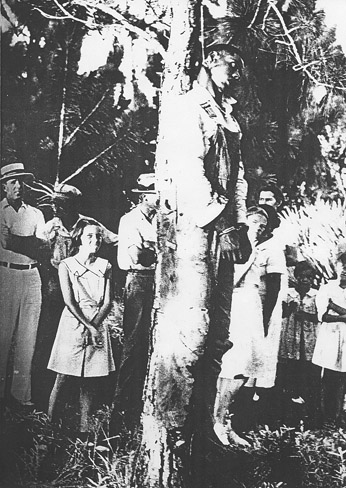from my relationship with Evans’ photographs. I know that I was one of the few people in the
class that felt that way and so I began to wonder what it was that I didn’t like. Agee’s words are
interesting and engaging. He filled in the gaps between the photos, telling us the stories behind the
pictures. So what had he done wrong? Then that’s when it hit me. He hadn’t done anything
wrong. And that was the problem. Any good photograph poses a question, and the best
photographs force the viewer to answer. Evans’ photos are rich with subtle paradoxes and
emerging narratives that I cannot help but spend hours pondering. Then, I read Agee and I no
longer have to wonder. I know who lived there, why things are the way they are. Agee shared his
answers with us in such an authoritative way that he leaves little to nothing for the viewer. And so,
to supplement the reading of Let Us Now Praise Famous Men, I recommend that the following
assignment.
Complicating the Question
The Goal
To find the question that lives in a photo and then, through narrative, to force the reader to address
it—as a writer, to move beyond the obvious and detrimental desire to
simply answer the question.
The Book
Without Sanctuary is a compilation of American lynching photographs taken between 1882 and
1968. The editor, Mr. Allen, says, "Without Sanctuary is a grim reminder that a part of the
American past we would prefer for various reasons to forget we need very much to remember."
As a book, it forces us to address this sad part of our history. Once confronted with these images,
it is impossible to ignore the questions they ask. The past becomes present, giving us an
understanding of what it has meant and perhaps continues to mean to be white or black in
America.
The Assignment
Pick a photograph. Write down the question that it forces you to grapple with. Then write a short
narrative that complicates that question. You can write from the perspective of a person in the
photograph. Try to avoid making value judgements. Especially try to avoid simply answering the
question.
To explain what I mean, I did my assignment! Here it is:
The Lynching of Rubin Stacy–July 19, 1935–Fort Lauderdale, Florida

Question: Why is the young white girl in the background smiling like
that?
How to complicate that question:
They said he did unspeakable things—unspeakable things to little girls. He had two daughters.
On Wednesday nights when they came in from visiting with Ms. Rose down the street, Rubin and
his wife were always ready. Ms. Rose’s children had all gone North and she looked forward to
the visit all week. The girls looked forward to Wednesdays too, but in anticipation of what might
happen after the visit. The neighbors would grin as they heard those wild Stacy girls tearing down
the street. They knew the rituals of the night only by the sounds of singing and laughing that went
on well past bedtime. The rest was a Stacy family secret. The girls stopped just short of the porch,
and then, with their most mature, most adult-like faces, they’d climb the stairs on tiptoe and knock
elegantly on their own door. It would swing open and there would be Rubin, arms full of robes
and slippers. Before they could count five their everyday clothes were magically replaced by what
they fancied to be royal garb. Then Rubin would escort them into the dining room, announcing
their entrance to the many imaginary guests. A murmur would go through the invisible crowd that
at long last the princesses had arrived. The girls could never guess what might happen on princess
night. Once they had eaten pancakes with bits of chocolate in them for dinner and rounded the
evening off with a ball, taking turns dancing round and round standing on their daddy’s feet. This
night was going to be a great one. Rubin and his wife were already singing as they brought out
the feast. It was hard to tell who was more excited, Rubin or his daughters. His wife always teased
him, told him he started up this whole princess thing so he could pretend he was a king. He’d
chuckle, wrap his arms around her and twirl her around, reminding her that if he was king then
she was queen. That night was the last princess night. When the white men broke into the house
the shrieks of the girls could be heard outside the open windows. The neighbors shook their
heads, still grinning, thinking it a wonder that the Stacy’s roof hadn’t flown off years ago. The
white men held back Rubin’s wife and daughters. Rubin was strong, but he was no match for
them. They dragged him down the street in handcuffs, toward the tree where they would exact his
punishment. His wife and daughters were left huddled in the corner, arms, legs and tears
intermingled. The girls’ construction paper crowns lay torn and crumpled on the floor. Rubin was
still dangling from the tree when the white folks woke up in the morning. They looked up at him,
a strong black man in his overalls, and felt a little bit safer. They said he did unspeakable
things—unspeakable things to little girls.